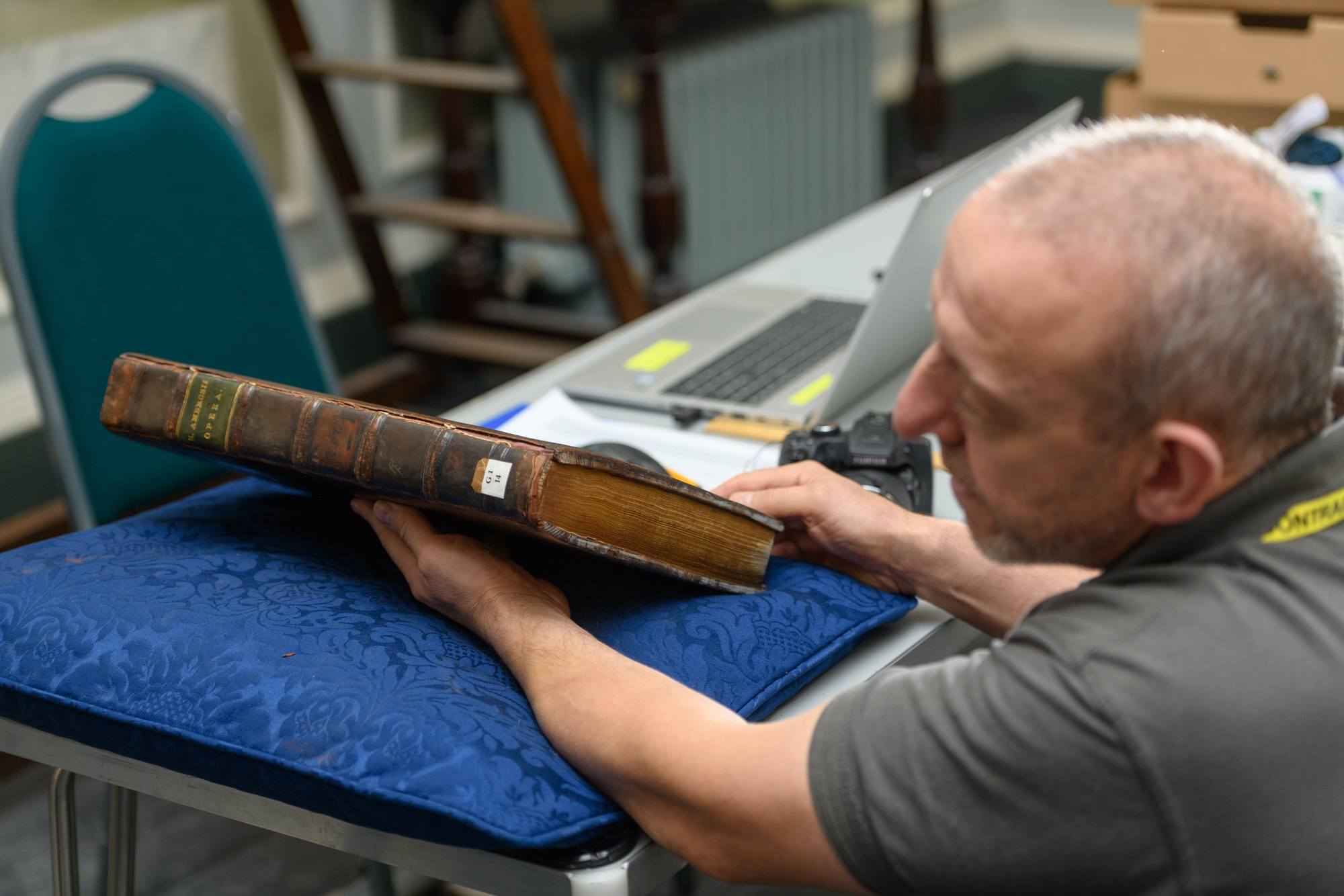Any museum move, regardless of scale or distance, must be well-planned and adhere to a set procedure. Cultural valuables are unique and often fragile, so any rough or disruptive movement can jeopardise their safety. Poor handling, temperature and relative humidity variations, as well as bumps or vibrations when travelling, can all cause damage.
The trick is to consider each object as irreplaceable. Every container should reflect years of curatorial work. Every movement must prioritise the preservation of historical, cultural, and scientific integrity.
If you’re wondering how to relocate a museum collection safely, we’ll guide you through the process, from planning and packing to transport, highlighting best practices that reduce risk and prevent costly errors.
Why relocate a museum collection?
Museums may need to relocate all or part of their collection for a variety of reasons:
- Building redevelopment or restoration: Older buildings often need structural upgrades or accessibility improvements, which may require temporary or permanent relocation.
- Expansion or rebranding: Museums may move to larger, modernised spaces to enhance visitor experiences or redefine their mission.
- Collections consolidation: Institutions with off-site storage may consolidate holdings into a central facility for more effective management.
- Environmental concerns: Collections housed in locations vulnerable to flooding, fire, or environmental degradation may be moved for preservation.
- Digitisation and audit projects: Some museums temporarily relocate objects to facilitate digitisation, deep cleaning, or inventory verification.
Regardless of the reason, moving museum collections demands advanced preparation, meticulous planning, and the right expertise. A well-structured strategy serves as the foundation for securely relocating a museum collection. This stage is critical for reducing interruption, protecting important artefacts, and ensuring a smooth transition from start to completion.
Steps for planning a successful museum relocation

Begin by gathering a team of experts, including conservators, registrars, curators, project managers, and external specialists. Their combined knowledge will shape the planning process and inform important decisions throughout the relocation.

Clearly indicate what is being relocated – is it the complete collection, or only certain displays, archives, or storage items? Understanding the scope helps to establish expectations for a thorough and robust relocation plan.

Determine any possible risks to the collection, such as handling difficulties like narrow doorways and steep stairs, temperature fluctuations, or vibrations. Create plans to manage these hazards so that artefacts are always protected and secure.
- Use padded trolleys and lifting aids to safely navigate tight or elevated spaces.
- Monitor and stabilise temperature and humidity levels throughout the move using climate-controlled containers or vehicles.
- Employ vibration-dampening materials and secure packaging to minimise movement and prevent impact damage.

Plan every stage of the relocation, including packing, conservation, transportation, and reinstallation. A thorough schedule is vital for maintaining process organisation and progress.
- Allocate time for condition checks and documentation before packing begins.
- Schedule conservation treatments well in advance to avoid delays.
- Coordinate transport dates based on the availability of climate-controlled vehicles and specialist handlers.
- Include buffer periods for unexpected delays or emergencies.
- Plan reinstallation in stages, prioritising sensitive or high-value items first.

Create a line-item budget that includes costs for specialist services such as object handlers, conservators, and transport providers. Include expenses for high-quality packing materials (e.g., acid-free tissue, custom crates), climate-controlled vehicles or containers, short-term storage rental, and comprehensive insurance coverage for both transport and handling. Don’t forget to budget for staff training, documentation tools, and environmental monitoring equipment if needed.
Key factors to consider when relocating museum collections
When considering how to avoid damage during relocation, museums must evaluate several risk-related factors:
- How fragile the items are: Organic materials like wood, metallic objects, and paper-based archives all have different vulnerabilities, so this needs to be a crucial factor in any museum relocation plan.
- Environmental requirements: Some sensitive artefacts, particularly ones that are porous or very old, require stable temperatures and humidity levels during the move and while they are in storage.
- Legal and ethical considerations: Ownership, provenance, and cultural permissions may come into play, especially for Indigenous or sacred objects.
- Public communication: To maintain public confidence and encourage openness and participation, it’s important to communicate regularly with visitors, donors, and stakeholders. Share information about temporary closures and the reasons for the relocation, as well as expected timelines and methods taken to protect collections.
Why experience matters
Specialist expertise is essential when packing museum objects for moving and coordinating large-scale museum relocations. Unlike standard logistics providers, professional heritage relocation teams understand:
- The nuances of artefact preservation during transport
- Packing techniques suited to rare or unstable materials
- Handling protocols for hazardous or bio-sensitive items (e.g., taxidermy, preserved specimens)
- The cultural sensitivities involved in handling historically significant objects
Without this expertise, even small errors can result in irreversible damage.

Best practices for relocating museum collections
A successful museum move relies on a combination of strategy, conservation awareness, and the right materials. Below are some museum relocation best practices:
- Detailed condition reporting: Before and after relocation, conduct visual and written assessments to record the condition of each object.
- Sequential packing: Label and catalogue items in the order they are packed to help keep clear records of each box’s contents and location.
- Zoned movement: Group items by fragility, material, or destination to streamline handling and reduce unnecessary movement.
- On-site conservation support: Ensure conservators are available during packing and unpacking to oversee fragile items.
Packaging materials and methods
Packing rare and priceless museum artefacts often requires more than just bubble wrap, it sometimes demands conservation-grade materials and item-specific solutions to guarantee preservation. Some core materials include:
- Archival tissue and acid-free paper: Prevent deterioration of paper-based items and delicate surfaces.
- Plastazote foam: A closed-cell polyethylene foam used for shock absorption and support.
- Custom crates and cavity packs: Built to match the shape and needs of each item, these are particularly important for statues, furniture or uniquely shaped objects.
- Barrier films and desiccants: Used to regulate moisture inside packing crates, especially for international or long-distance moves.
Each item must be wrapped, supported, and secured in a way that accounts for vibration, pressure changes, and handling.
Safe and specialised transportation
Even the best packing won’t protect all museum pieces if transport conditions are overlooked. Safe relocation also depends on environmental control and expert handling logistics:
- Climate-controlled vehicles: Trucks or containers should maintain consistent temperature and humidity.
- GPS-tracked logistics: Real-time tracking offers peace of mind and accountability throughout the move.
- Trained handlers: Movers must be trained in cultural heritage protocols and understand the significance of what they’re handling.
- Short distances and timed moves: Moves should be carefully timed to avoid peak traffic and reduce transit times, where possible.
At every stage, the aim is to uphold both physical integrity and curatorial intent.
The role of documentation in museum moves
Documentation is essential for maintaining accountability, tracking, and the ability to respond quickly if anything is misplaced or damaged.
- Inventory management systems: Use digital asset registers to log packing locations, condition reports, and barcoded labels.
- Chain-of-custody forms: Ensure every handler signs off when objects are transferred, especially for high-value artefacts.
- Photographic records: Take high-resolution images before packing, during transit (where possible), and after unpacking for comparison.
Not only does keeping thorough documentation support insurance claims and internal audits, but it also assists with repacking, reinstalling, and future conservation work.
Preserving the cultural significance of museum objects
A relocation is more than a logistics exercise, it’s a moment of stewardship. Artefact preservation during transport must go beyond the physical. Cultural and historical narratives must also be protected.
This includes:
- Ensuring context is not lost during reinstallation
- Consulting with originating communities where appropriate
- Maintaining interpretive materials and records alongside objects
- Taking extra care with composite artefacts or those with previous restoration
Preserving intangible value is just as important as protecting tangible integrity.
How Restore Harrow Green supports heritage relocations
Restore Harrow Green specialises in transferring museum objects with care, precision, and respect for cultural heritage. Our professional team serves museums, galleries, and archives around the UK, adhering to best practices throughout the relocation process.
We offer:
- Expertly packing for moving using conservation-grade materials.
- Custom crate design and protective solutions
- Climate-controlled and GPS-tracked vehicles for the safe transportation of historical relics.
- Complete paperwork and safe short- or long-term storage solutions.
We will guarantee that your collection is secured at all stages, from planning to artefact preservation during transportation. Contact us today to request a customised museum relocation quotation.
 Customer Login
Customer Login